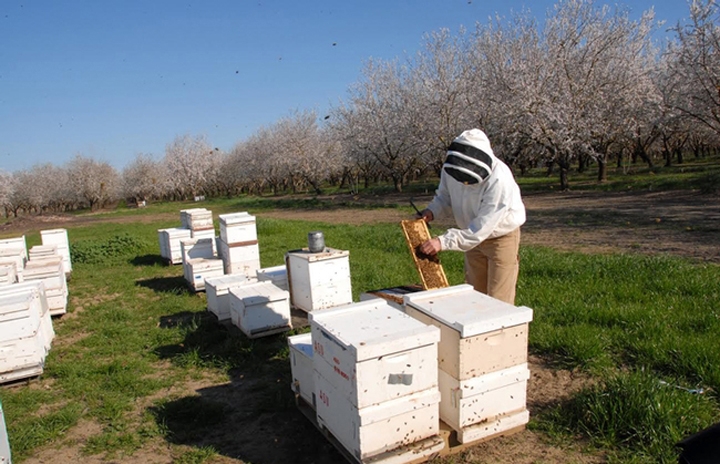Honey Bee Considerations at Bloom
 There has been a lot of concern about honeybee health related to fungicide and insecticide applications within orchards. More is being learned every year about the impacts of pest management practices on hive health. Recently, The Almond Board of California released an excellent resource titled "Honey Bee Best Management Practices for California Almonds." This resource provides an overview of the research conducted and the recommendations generated from the results and conclusions.The following is a brief overview of these practices that are associated with insect and disease control around bloom:
There has been a lot of concern about honeybee health related to fungicide and insecticide applications within orchards. More is being learned every year about the impacts of pest management practices on hive health. Recently, The Almond Board of California released an excellent resource titled "Honey Bee Best Management Practices for California Almonds." This resource provides an overview of the research conducted and the recommendations generated from the results and conclusions.The following is a brief overview of these practices that are associated with insect and disease control around bloom:
- Read the pesticide label carefully - including surfactants - and avoid any chemicals that indicate toxicity to bees.
- Avoid applying or tank mixing any insecticides during bloom until the effects on bees are known. Treatments for peach twig borer should be considered prior to bee move-in or after hive removal (i.e. delayed dormant, "May" spray);
- Avoid the fungicides iprodione, captan, or ziram. These fungicides negatively impact bee hive health;
- Apply fungicides later in the afternoon or evening when bees and pollen are less present. It is also important to also not spray too late that the fungicide does not have a chance to dry before the next foraging day;
- Addition of adjuvants is not needed unless specified by the fungicide label. These compounds may harm bees by increasing fungicide activity;
- Cover or remove the bees’ water source and avoid spraying the hive directly with any pesticides.
- More information can be found at The Almond Board of California.
Keep in mind that these spray practices are independent of good bee hive care, which includes provision of water in during dry bloom periods, sources of pollen.nectar in bee holding areas, and of course, good communication with your beekeeper.
